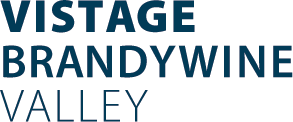Promote Learning From Your Vistage Experience, Vistage Fundamental #3
Take ownership for finding and delivering value. Choose to learn from others and choose to share your own wisdom as well.
Take at least one nugget of knowledge or wisdom from every 121 and group meeting.
Become a teacher of Vistage learnings in your organization. Share with the group ways that you’ve implemented Vistage concepts in your company.

by Steve Van Valin
Culturology
steve@culturologyworks.com
484-364-1171
Transcript
This is Steve VanValin with Culturology, and I’d like to share this month’s fundamental for the Vistage Brandywine Valley Groups led by our master chair, Jim Lucas.
And we have the Vistage Way, which is composed of 14 fundamentals, and each month we take a focused look at one of them. And this month, it’s number three to promote learning from your Vistage experience.
Since this is the beginning of a brand new year, I wanted to challenge us on this very first sentence in this fundamental where it says, “Take ownership for finding and delivering value.” If we can find and deliver value in a very specific way that can activate our culture this year, we can create a game changer for performance and revenue. So, let’s take a look at how we can do that.
I believe every organization, and really every team, has a value creation hallmark. In other words, it’s their special sauce. It’s the unique thing that you do, and your culture does to bring value to your customers. Once you know what that is and activate your culture, you create a competitive advantage because it has momentum from the inside. Let’s take a closer look how your culture does deliver value and what you can do as a leader to influence it.
First of all, there’s different culture types and employee experiences that we’ll look at, but also what is valued within an organization for each one of these levels. I call it a hierarchy because there’s different levels of performance that determine whether or not you’ll have collaborative performance and also the cost of doing business together. We want to minimize that.
So, at the bottom level, and you probably don’t have this in your organization, but maybe you do in some teams where it feels toxic, people are not really adding much value at all. They’re just avoiding and complying, and the experience feels like it’s broken and resentful to work with each other.
The only things that are valued are rules and power and blame casting. And if we move up to the next level, and this isn’t a bad thing, but consistency and predictability is how you add value in the marketplace. And the employee experience probably feels slow and a little bit dutiful. And what is valued is adherence control and minimizing risk. There’s nothing wrong with that; it’s just very slow.
At the next level up, we’d call it a turbulent culture where firefighting and heroic acts make a big difference in delivering performance, and almost every day perhaps feels like that. And then the experience of it is fast and stressful. So that sounds pretty exhilarating, except if you do it for too long, you tend to burn out. What’s valued in this type of culture is effort, multitasking, and commitment.
Now, we’re getting a little higher here on the collaborative performance, and we’re also reducing the cost of doing business together. In other words, get things done quicker, faster, easier, and smarter along the way. Here’s the aspiration that I want to challenge you to think about. How can you create the highest level of a competitive advantage by shaping a culture that’s fluent, where the value creation hallmark is about ideas and agility, being able to adjust in the marketplace to be able to be super responsive to customer’s needs and each other’s needs on the way you drive innovation?
The employee experience feels energized and meaningful at this level. And what’s valued that makes this happen is meaningful relationships, accountability, in other words, people owning it across the board, and then collaborative candor, that ability to brainstorm with each other and share honestly about coaching and feedback to get it to the next level. Fluent, this is the highest level and could be a game changer for revenue for you.
Now, how do you get to this point if you found yourself at maybe one of those other levels? It’s about using our fundamental here, where the theme is about learning. How can we teach people what is valued within your organization, are meaningful relationships valued? What does accountability look like? Are people clear on that? And are people trained on how to be collaborative with each other and to give each other honest coaching and feedback along the way?
If we’re able to teach that, help them learn it, then the ideas and agility will naturally come out as a hallmark that’s making a difference, and employees are going to feel that energy. And so we need to model it first in a role as a leader because people will only rise as high as you’re willing to do as the leader.
So, let’s get things started in this new year to create a fluent culture where ideas and agility make the difference for you.
This is Steve VanValin with Culturology.


Sorry, the comment form is closed at this time.